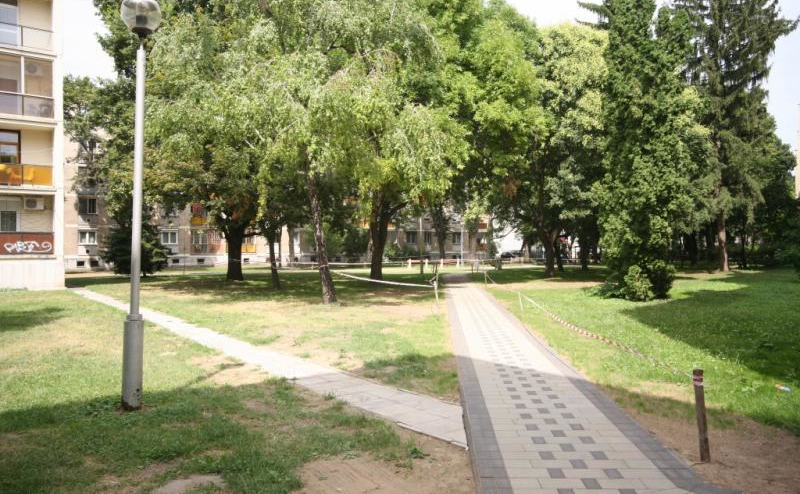Panel blocks and panel apartments have quite a history in Hungary, and it tends to be a love/hate relationship. Most panel blocks were constructed during the reconstruction efforts after the second world war (1950’s and 1960’s.)
Hungary has nearly 788 thousand flats in panel buildings, one-fifth of the population live in them, including most of the population of Debrecen.
The panel blocks in Hungary and in particular Debrecen are lovingly cared for despite their limitations and problems, they are known for their durability, and have a better build quality than most in Europe. In addition, they were well situated among parks with trees with private play areas for children.

History of Libakert.
Located on the northern edge of the downtown is an area of the city known as “Libakert”, it was here that Debrecen’s first housing estate was built in place of pasture, by a lake where geese swam.
The geese were driven out of Mester and Csemete streets into the pasture here. On the corner of today’s Dózsa György and Honvéd streets, there was a pond or lake called “Libató”. The location was no coincidence as it was one of the lowest points in the area.
The area was operating as vegetable gardens in the 16th century. Due to the lower soil level and the high water level, the area was excellent for growing vegetables. Vegetables, on the other hand, required much more watering. Thus, wells were dug in a row, above which boom wells were erected.
It was not only good soil conditions that contributed to the excellent food production. Several Bulgarian gardeners who fled and started working here helped local producers. Mainly winter and summer lettuce, kohlrabi, cabbage, and horseradish were grown here. It was good to live in the “Libakert”. Producers of the area also had their own market area by the town hall.
Vegetable cultivation lasted until the mid-1950s. In 1956, plans were made to build the city’s first housing estate here. The gardens, wells, and houses were demolished. One by one, the four-story houses emerged from the ground, but nine-story point houses, shops, educational institutions were also built here.
The “Pöttyös Ház” was the first experimental residential building with a panel structure. However, New Life Park (Új Élet Park) development was the first large housing estate in Debrecen, which had not yet been made with house-panel technology. The modern workers’ hostel of the Construction Company was built here. The area was renamed New Life Park for a time.
Panel blocks and panel apartments have quite a history in Hungary and it tends to be a love/hate relationship. Consequently, most panel blocks were constructed during the reconstruction efforts after the second world war (1950’s and 1960’s.)
There was also a city-owned brewery in the former Libakert
In today’s Bem Square, the tram used to run next to the sidewalk and the evening lights were provided by gas lamps. Today, you can still see the Serház building built around 1820. It has performed several functions since its inception. It was one of the city-owned breweries and later housed the Rex Pharmaceutical Factory, and a post office after the war. Today, the building hosts the Villás Gallery.
In 2000, the area regained its name, but the part east of the University Avenue (Egyetem sugárút) was taken from the district. In the southern part, however, its area increased with the area bounded by Bethlen, Mester, and Csemete streets.
Photos of the area can be seen by visiting the online exhibition at the Méliusz Library here.